A Closer Look at the new Collaborative Editing Feature in Lightroom
The June 2021 update to the Lightroom family of apps brought a new feature to the Lightroom cloud ecosystem, called Collaborative Editing. This builds on the existing functionality for sharing an album with others by giving you the ability to grant permission to those you invite for editing existing photos as well as adding new photos of their own to the shared album.
[Editor’s note: This article originally appeared in the August 2021 issue of Photoshop User Magazine.]
Previously, we could share the album, and we could allow those we shared it with to add their own photos, so granting editing permission represents a pretty significant change in how these albums might be shared. For example, I’ve been creating shared albums for my college classes where I place each student’s work for the class to view, like, and comment. It has been a really nice feature that gets them introduced to album sharing as well as providing me a way to track their interactions with the photos. With this new functionality I will employ a different shared album where I grant them editing permissions to see each person’s take on an edit. Another example might be if you work with another photographer, and you want to have an album where you both can submit and edit photos to the same album. Another use I can foresee is simply sharing a single photo with another photographer to get their opinion on an editing approach or technique.
As I mentioned, this feature is primarily aimed at Lightroom for Mac, Windows, iOS, Android, and ChromeOs cloud-based versions, but we’ll look at how Lightroom Classic users can utilize this as well. It is also important to mention that you can only invite someone who currently has an active Creative Cloud subscription to use the service.
How it Works
I’ll start off in Lightroom (Lr) on my Mac (aka “Lightroom Desktop”) as the larger interface makes things easier to see, but these steps can also be done in Lr on the other platforms.
Step One: Choose an album that you want to share, and then right-click the album name to access the contextual menu and choose Share & Invite.
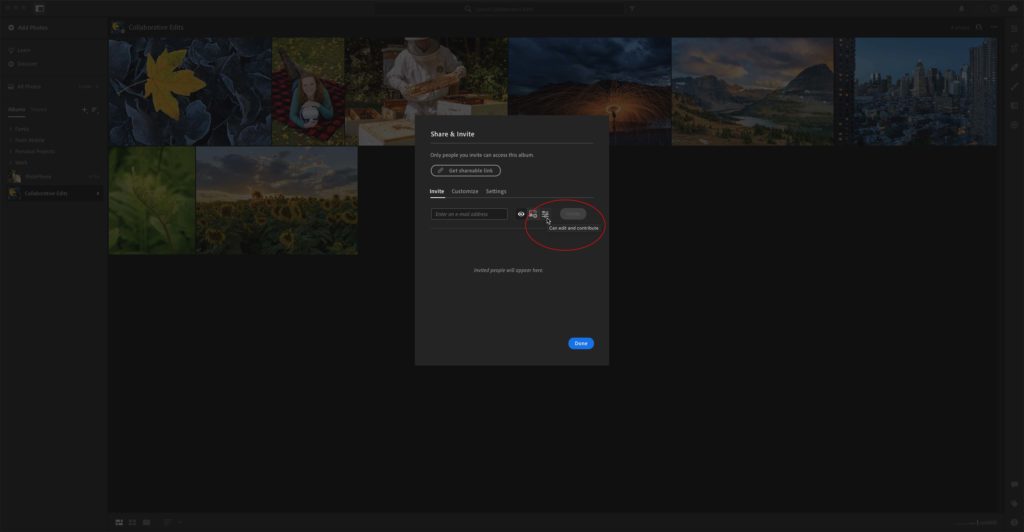
Step Two: In the Share & Invite dialog box, note the new icon under the Invite tab for granting edit and contribute permissions to whoever you invite by email. Enter the person’s email address, select the desired permission level (in this case edit and contribute), then click Invite.
Once the invitation is sent you’ll see an icon representing the email appear in the space below, along with that user’s permission level. You can change that level of permission anytime as well as remove a user from the shared album.
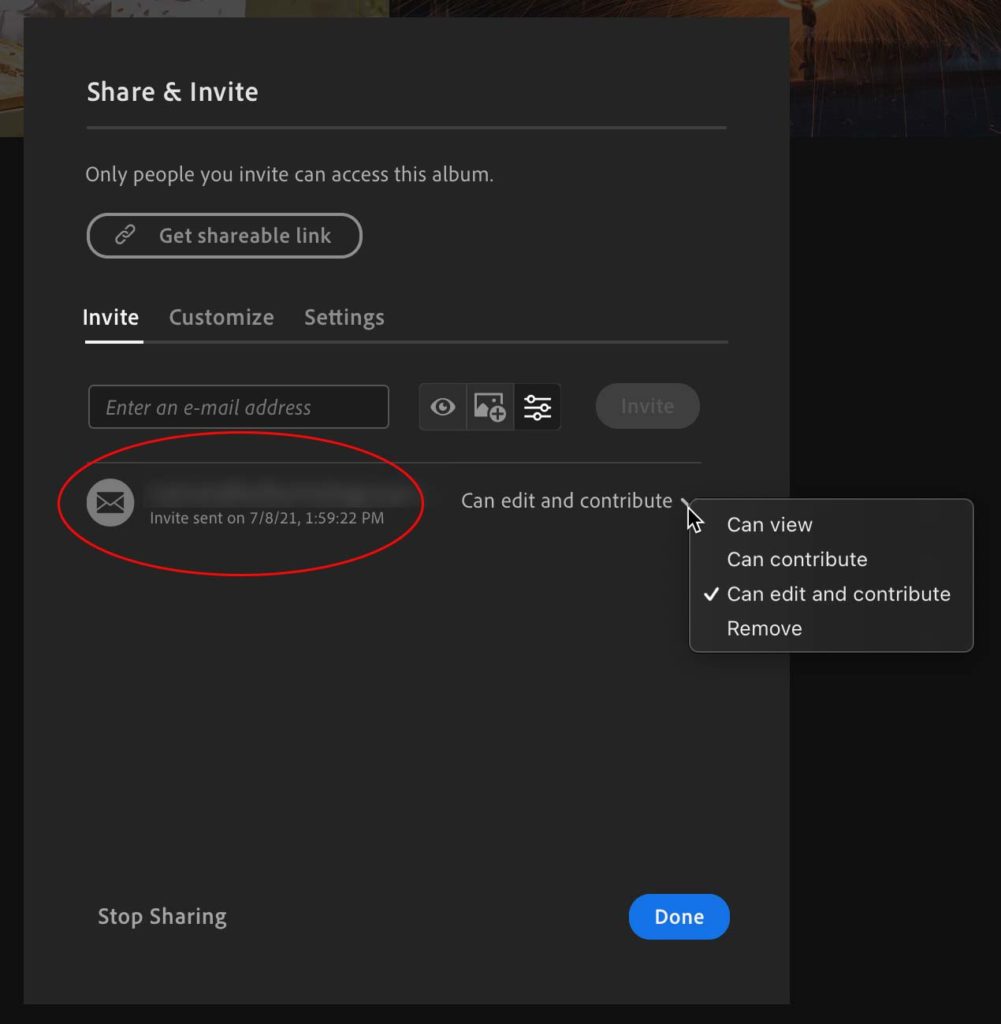
Once the invitation has been sent, you should see a new badge appear on the cover photo for the album indicating that it is shared and how many members (besides you) are invited.
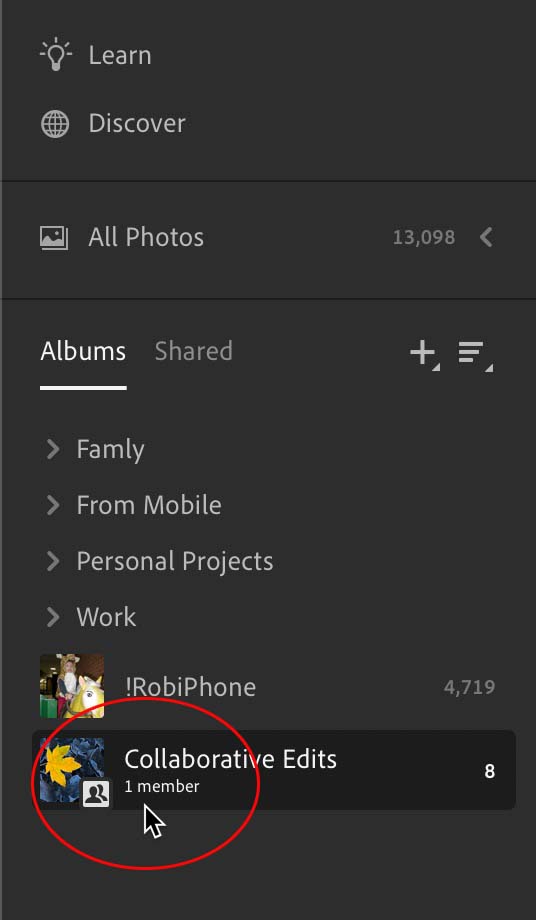
Once the invitation is received and accepted by the other person you’ll see the email icon is replaced by an icon representing the invited person along with their name (this is the information associated with their own CC subscription).
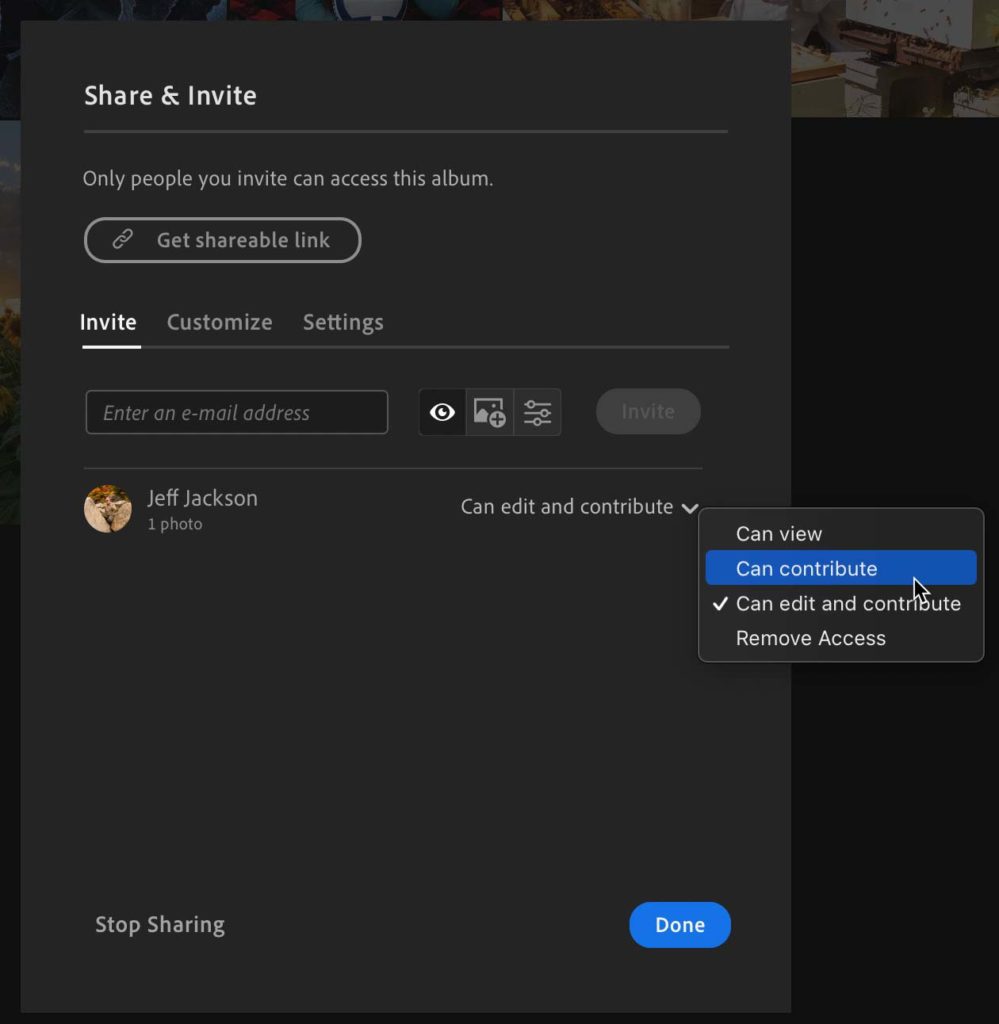
On the invitee’s end, they can open any of their Lr apps on whatever device they use, and they’ll see this new album appear under the Shared tab in the Shared with You section. This is how they can access the album for viewing, editing, and adding their photos. This shows what it looks like in Lr for the person I invited. Note at the top that search is disabled within albums shared with you, and your level of permissions is also displayed.
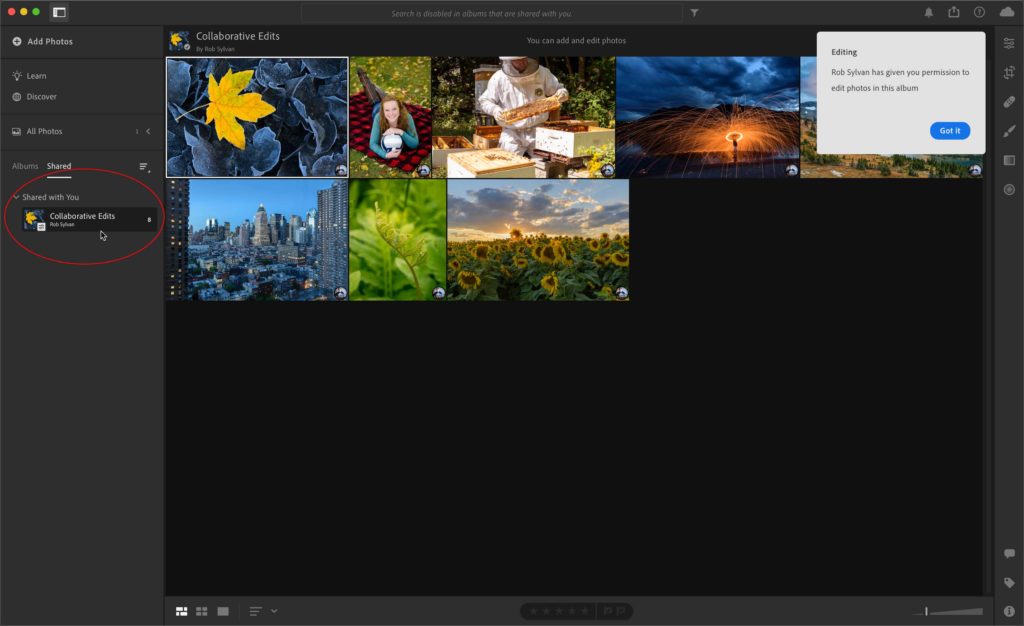
Invited members are not locked into the album, and can leave any time they wish. All one need do is click the badge on the cover photo to open the Sharing dialog box and click Leave Album.
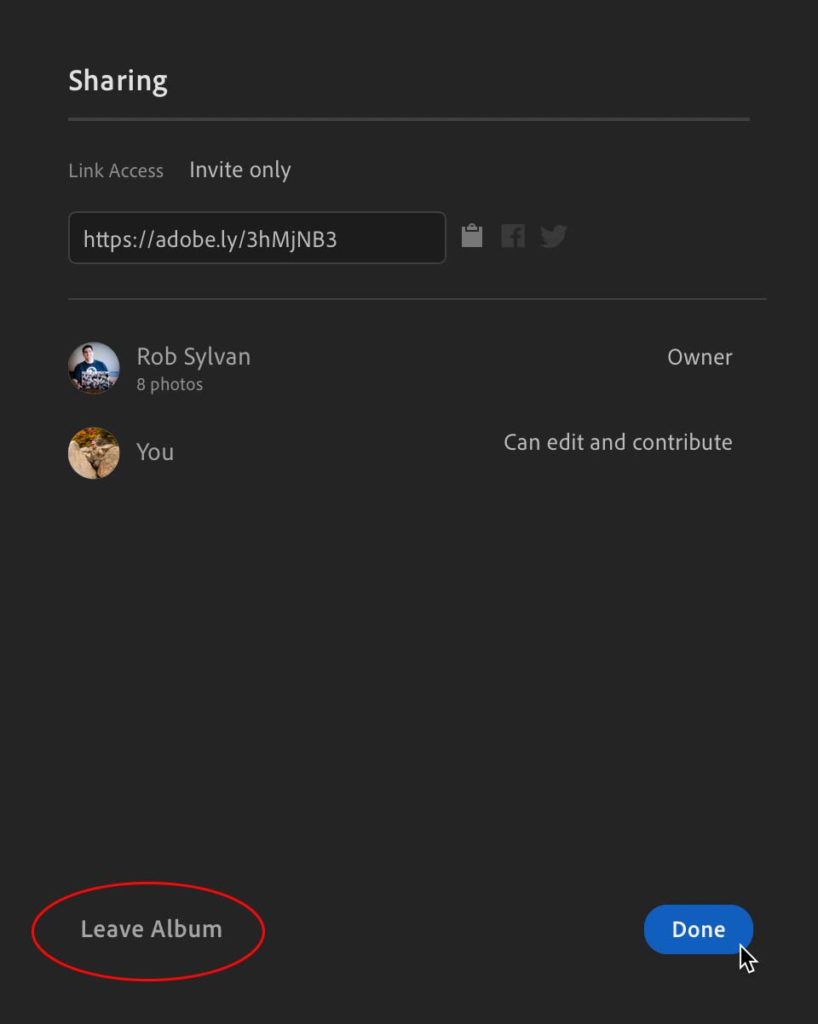
As you can see, they are unable to change their permissions, but they can see who else is included in the share. One tip to make it easier for an invitee to add photos to the shared album is to right-click the album’s cover photo and choose Set [“Album Name”] as the Target Album, which allows them to select any photo in their Lr library and press the T key to add it to the share.
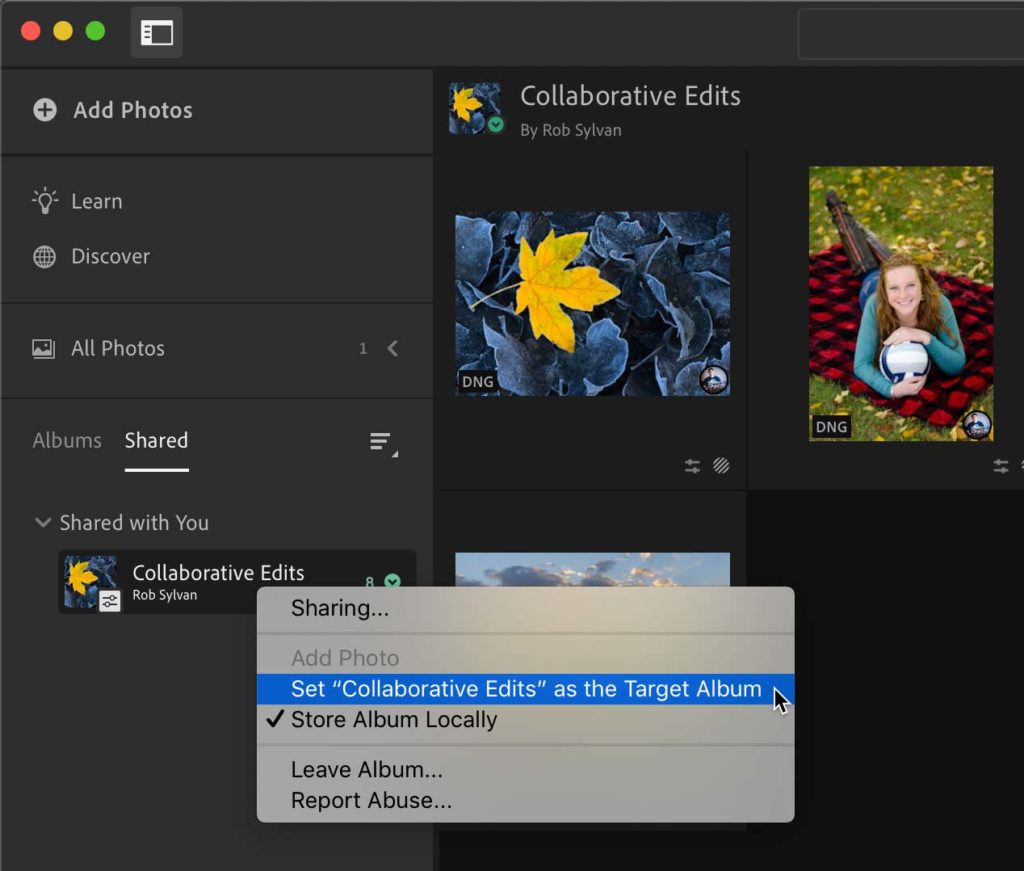
Note, that when the invitee is viewing the album they can see a badge representing you on all of your photos, but when you are viewing your own album you will only see a badge representing them on their photos (since I assume we can all recognize our own contributions). Now it is all up to your intended purpose for sharing and inviting the other person to determine how you proceed from here.
If an invitee decides to add a photo to the album they will be prompted with a notice informing them that a copy of the photo will be added to your album along with some options for what metadata they might choose to exclude.
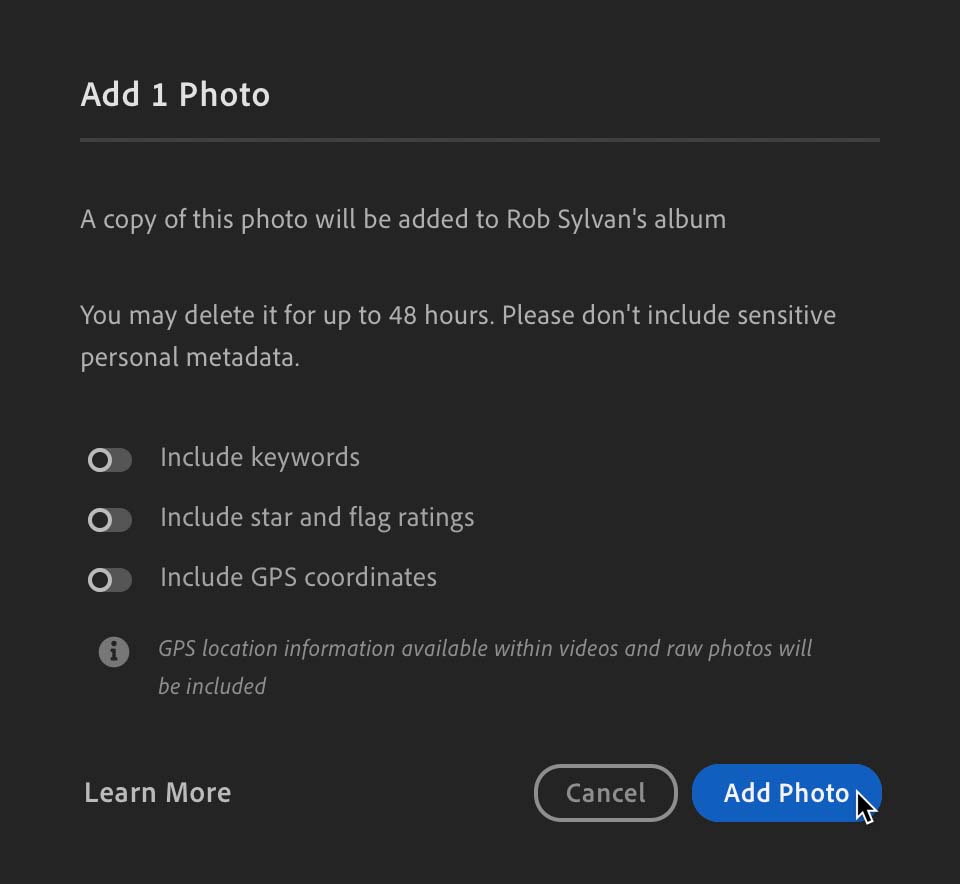
Editing Workflow
The editing process is the same for all parties and works just as it does for any photo already in your Lr library. Remember, this is intended for Lr cloud-based applications, so when you share the album, the other person gets access to the actual photo stored in the cloud. Yes, they could even export a copy of the original (note in the documentation it says the invitee can only export JPG copies, but in my testing I was able to export a full raw file). If your album includes photos synced from Lightroom Classic (LrC), then only a smart preview would exist in the cloud and that is all that would be shared in that album. However, people using only Lr will only have full resolution photos in the cloud, so bear that in mind when sharing access for editing with others.
The key to the editing workflow is found in the Versions panel (check out my article on using Versions to learn more). Let’s look at a scenario where the person I invited, Jeff, has edited one of my photos in the album. If I click on the Versions button at the bottom-right in Lr on my Mac it opens the Versions panel. Click on the Auto tab to see the versions that are automatically created by the other person’s edits.
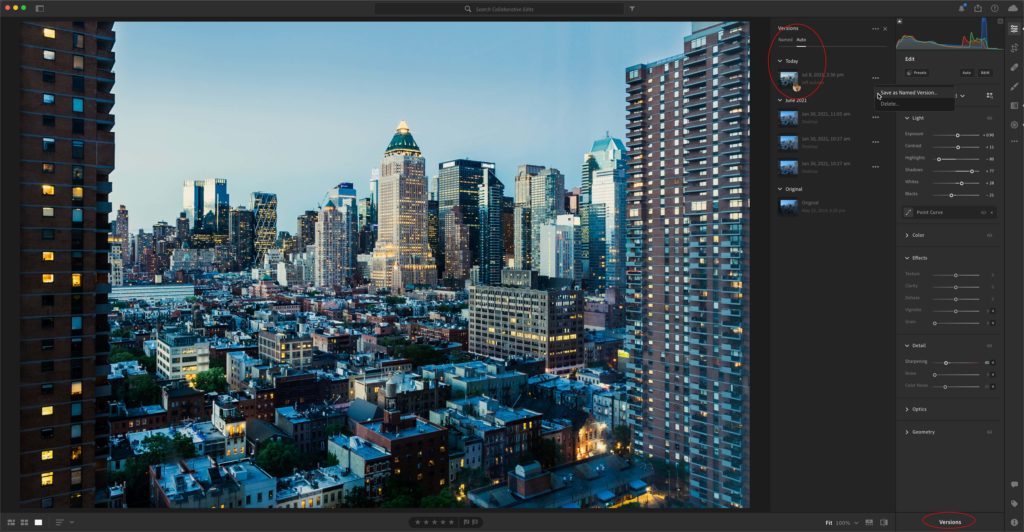
Here I can see when the edit was made and who it was made by along with any Auto versions that may have been created by my own previous edits. Just moving your cursor over the different versions will give you a live preview of what changed, so keep an eye on the editing panels to see what moves. Clicking the three-dot menu next to a version gives you the option to delete that version or to Save it as a Named Version if you choose. This can be helpful if you had previously saved a version of your edits, and perhaps you want to keep a named version of this new collaborative edit before you make new tweaks that get synced back to your collaborator. I can see how this can help track and compare final versions along the way.
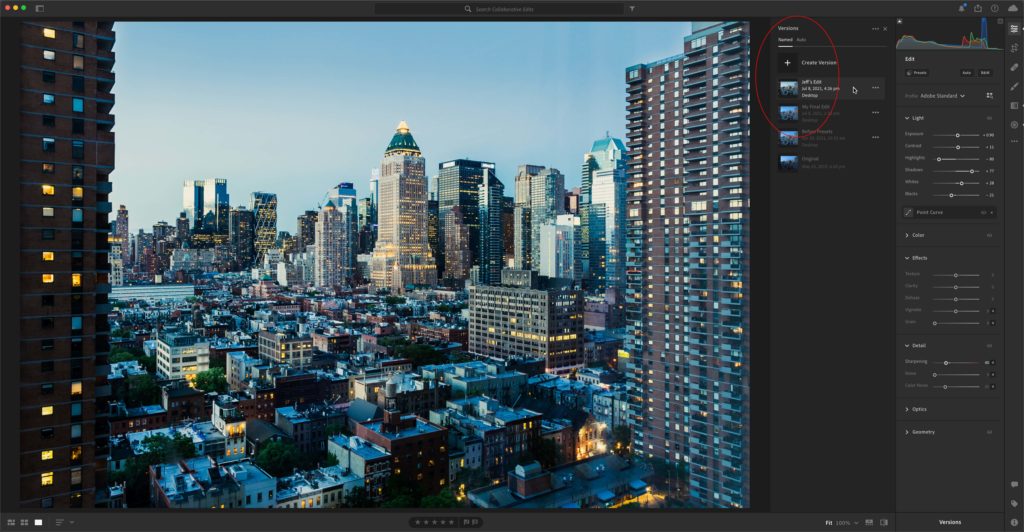
Does Lightroom Classic Fit Into This?
In my testing, I have had success with a collection that originated in Lightroom Classic, and then was shared and invite sent through Lr on my Mac. The album contained a mix of smart previews (from LrC) and full resolution photos (imported into Lr), and all were viewable and editable by my invitee. You cannot control any of the sharing permissions or invitation from Lightroom Classic, so you would need to use one of the Lr apps to do that part. In addition, while versions are very similar in behavior to virtual copies in Lightroom Classic, neither versions or virtual copies sync between LrC and Lr. All you would see back in LrC are “From Lr mobile” notations in the History panel when edits were made to a synced photo (along with the associated edits of course).
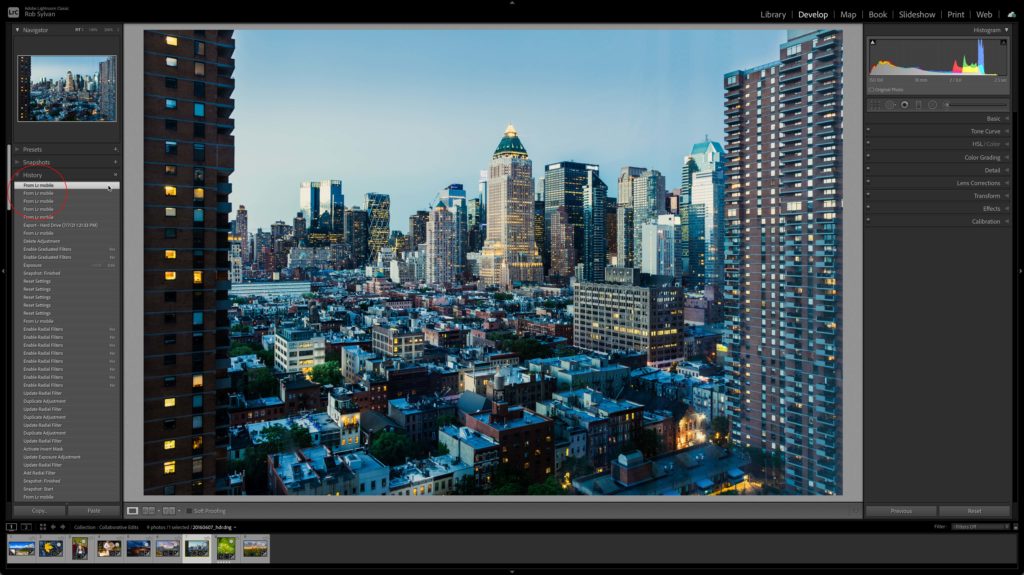
Obviously, if you only use the Lr apps this is not relevant to your workflow, but I know there are many, like myself, who use both LrC and Lr together. LrC users should also keep in mind that a lot of this can be accomplished by going to lightroom.adobe.com in your web browser, where you can actually edit photos, access the Versions panel, and even control sharing and invitations.
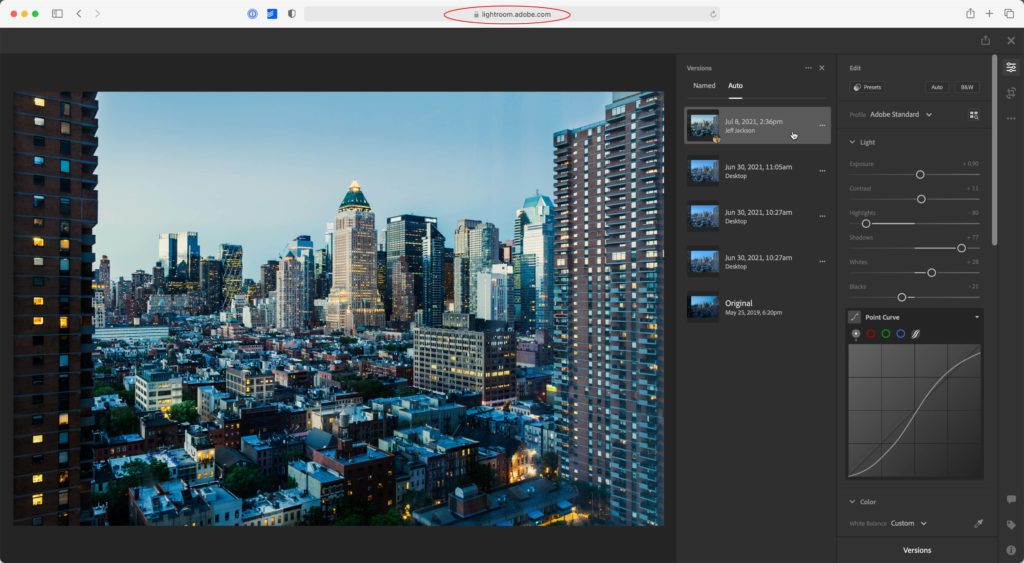
In Conclusion
Since editing is normally such a solo experience, I wasn’t sure how much I’d like this concept, but the more I use this feature the more I like the possibilities for collaboration with others. Maybe there are some instances where stepping out of the silo can be a benefit to all involved? I look forward to seeing where other people take this idea.
The post A Closer Look at the new Collaborative Editing Feature in Lightroom appeared first on Lightroom Killer Tips.
By accepting you will be accessing a service provided by a third-party external to https://kendallcameraclub.org/